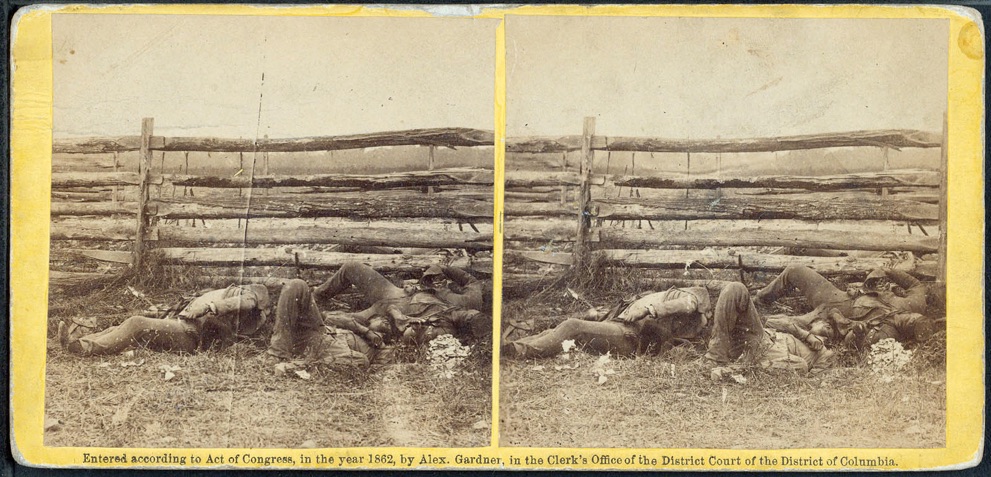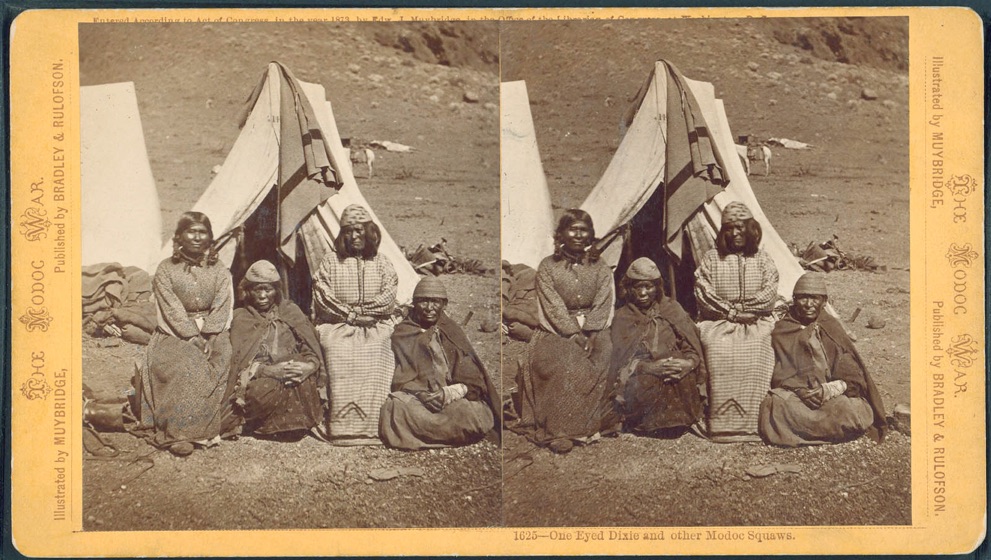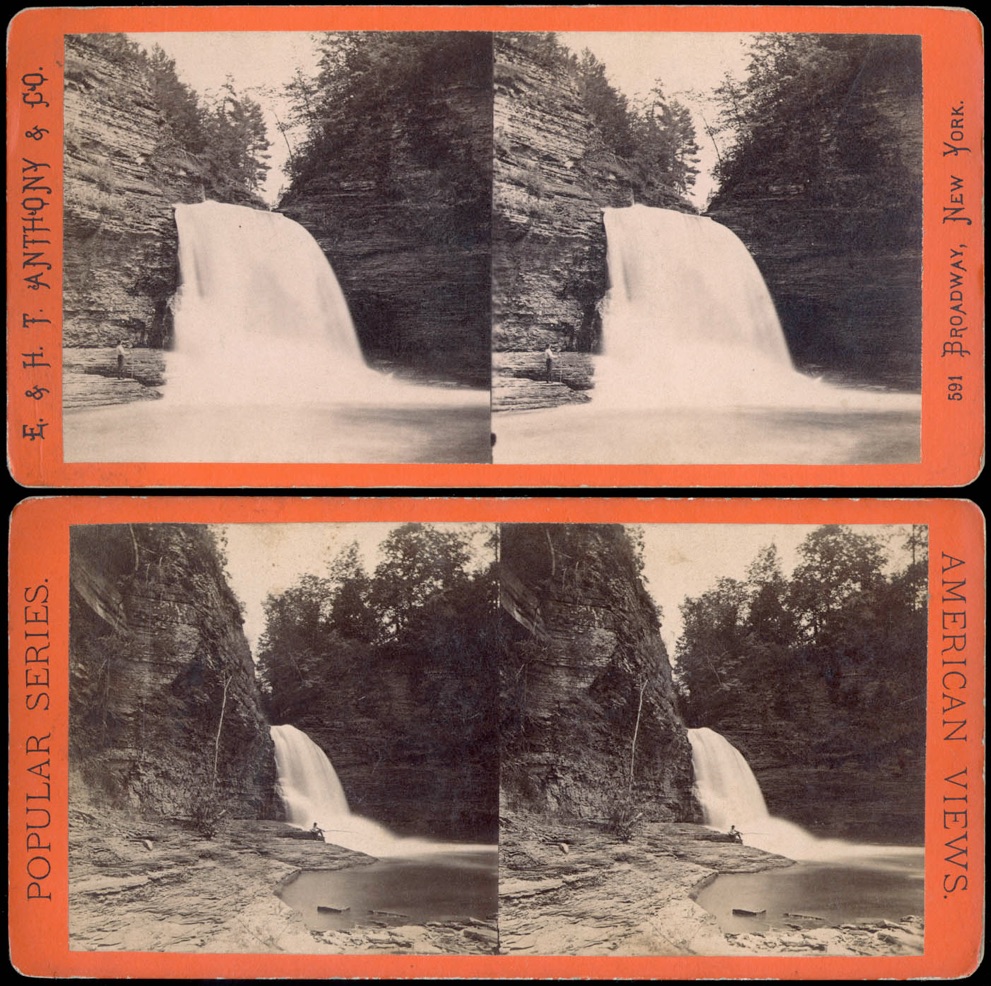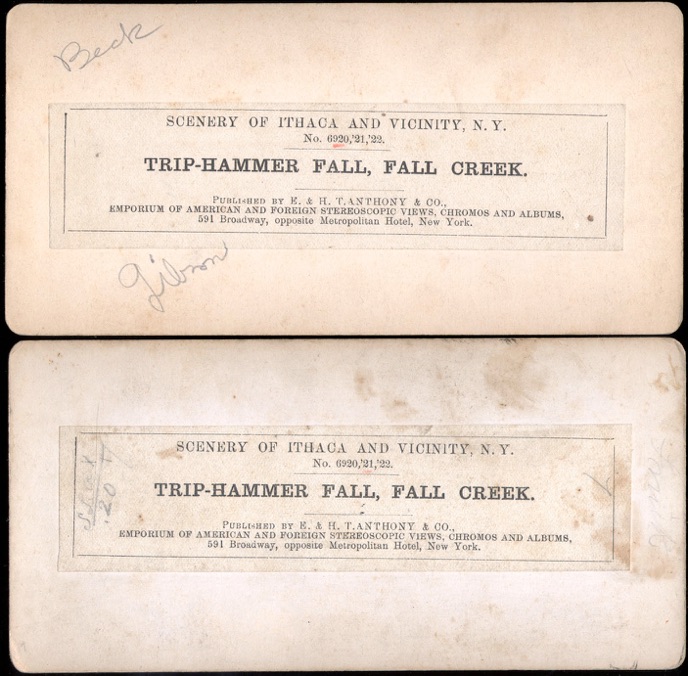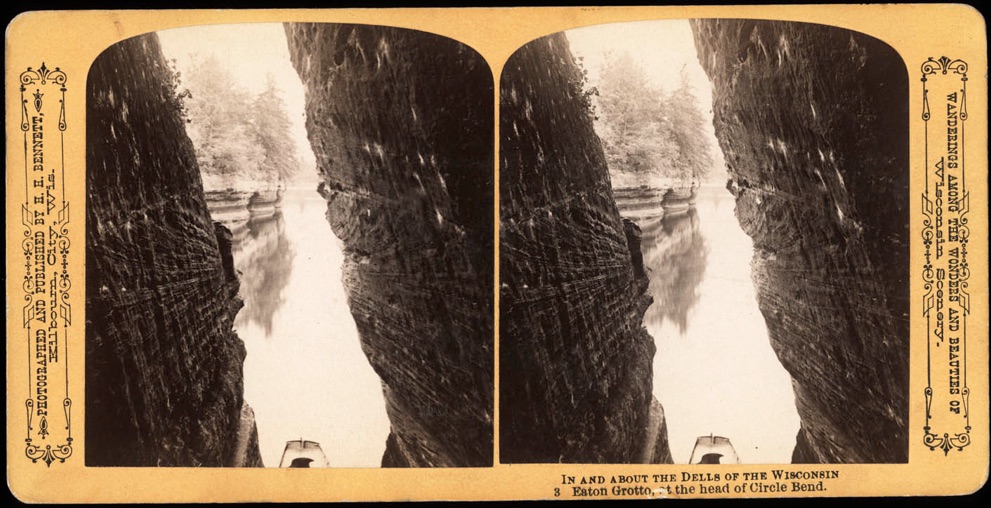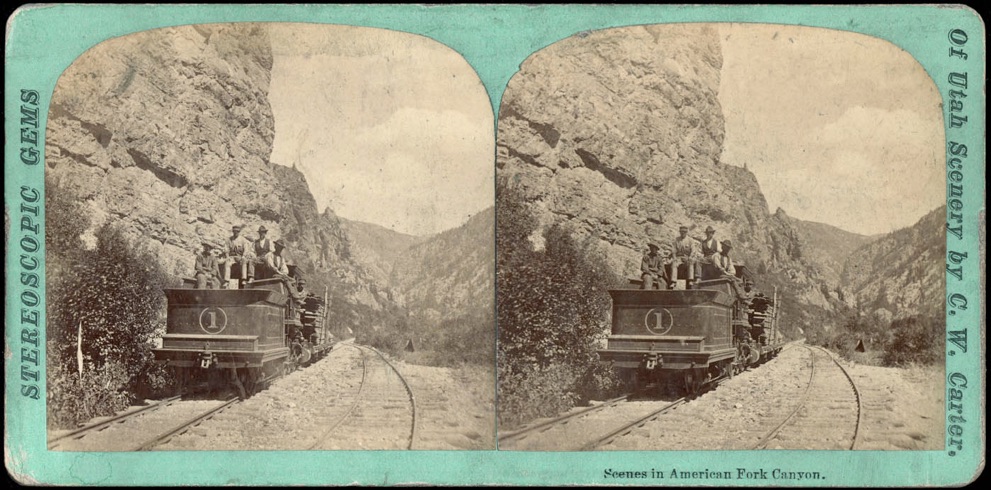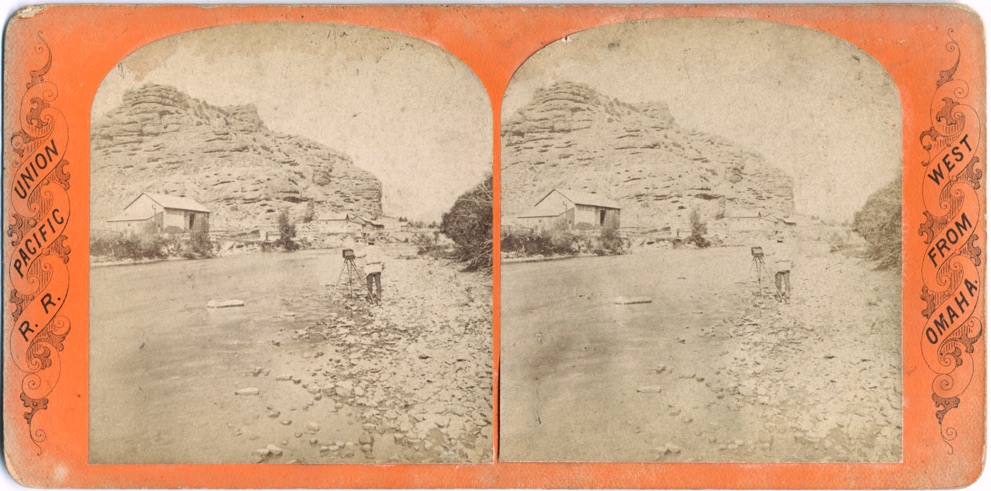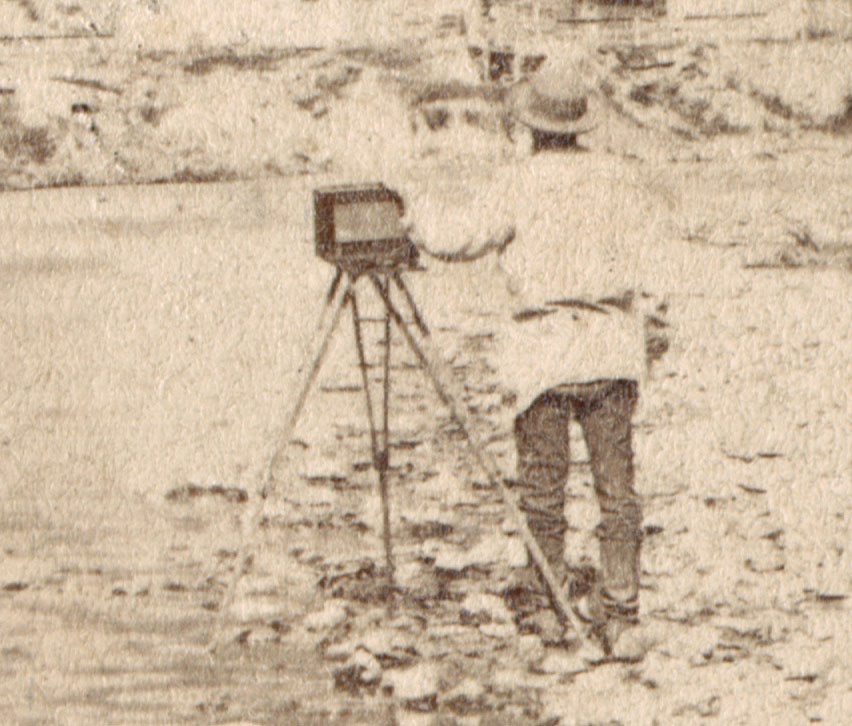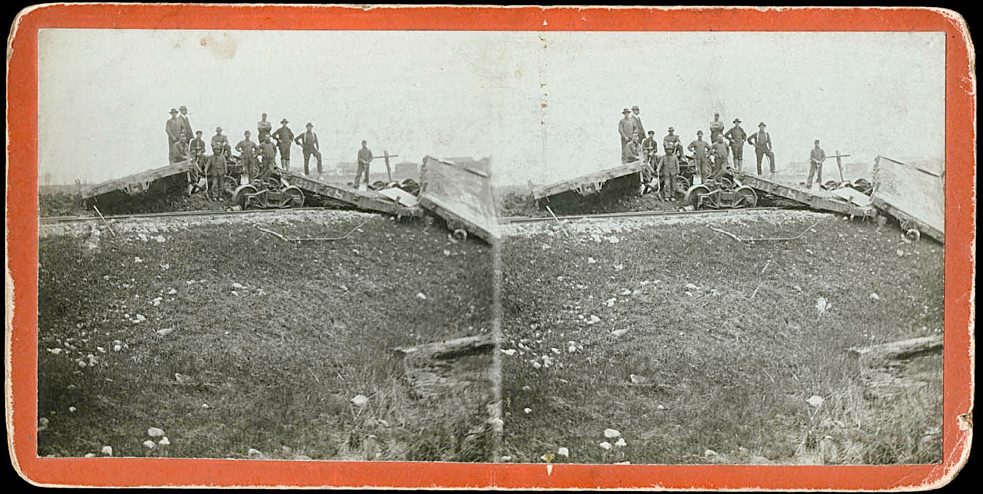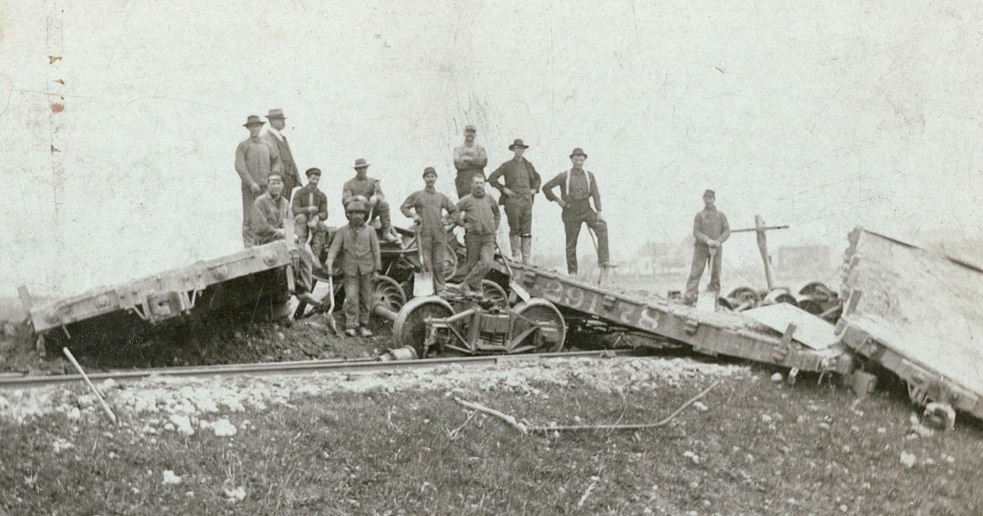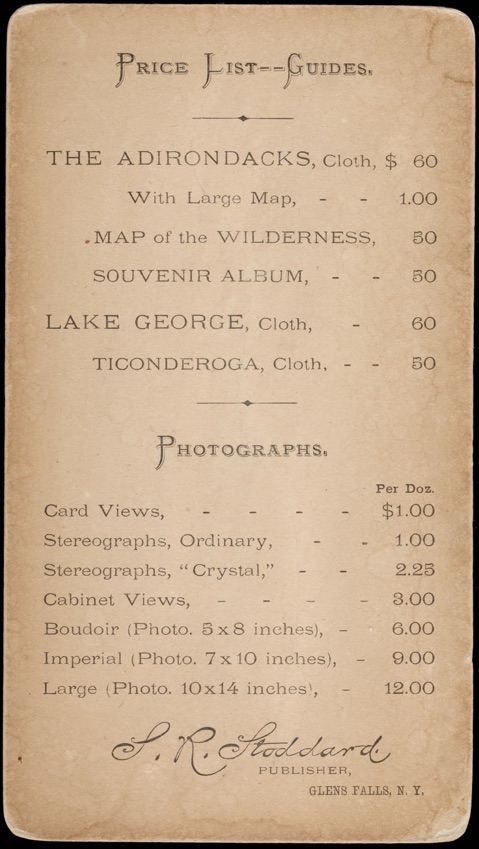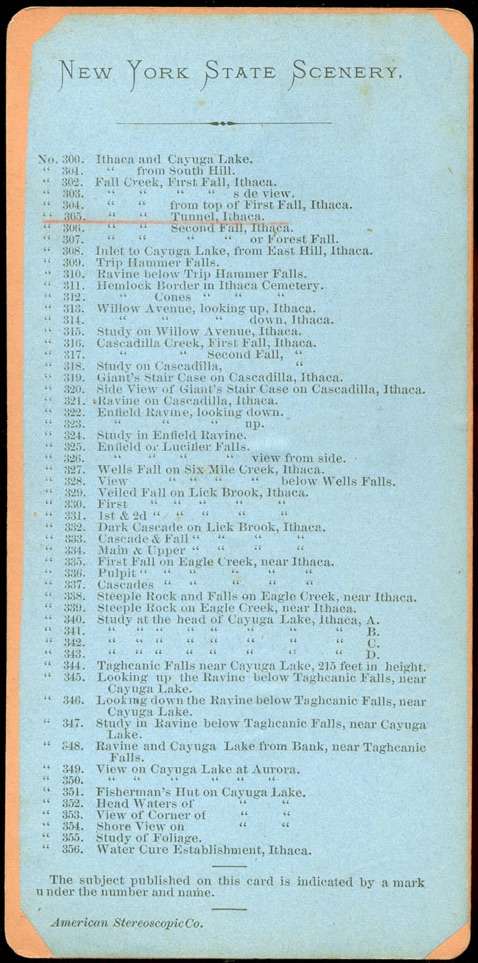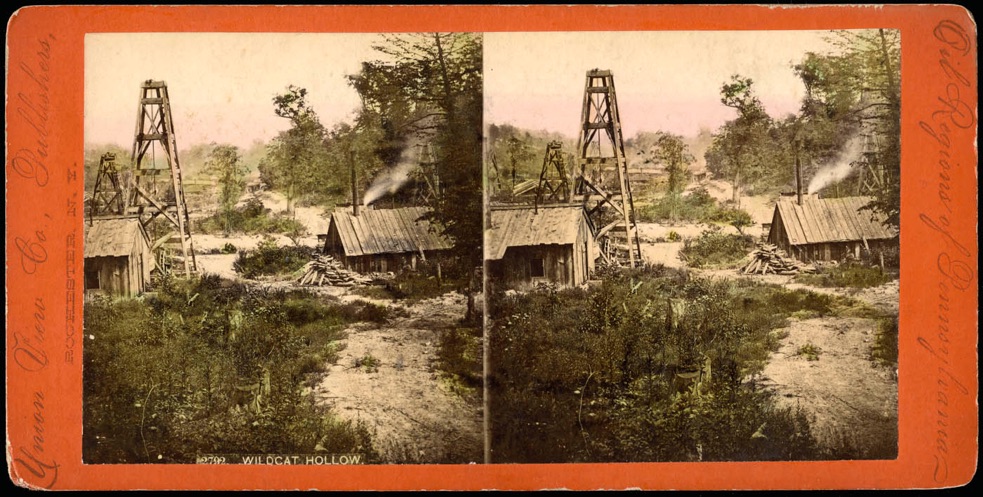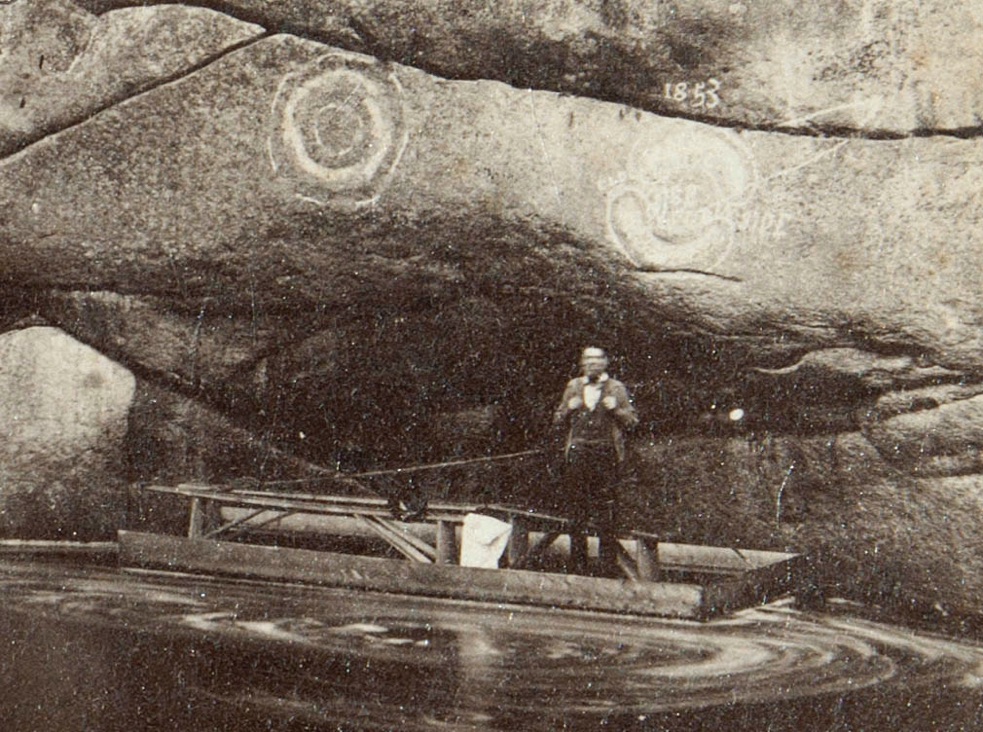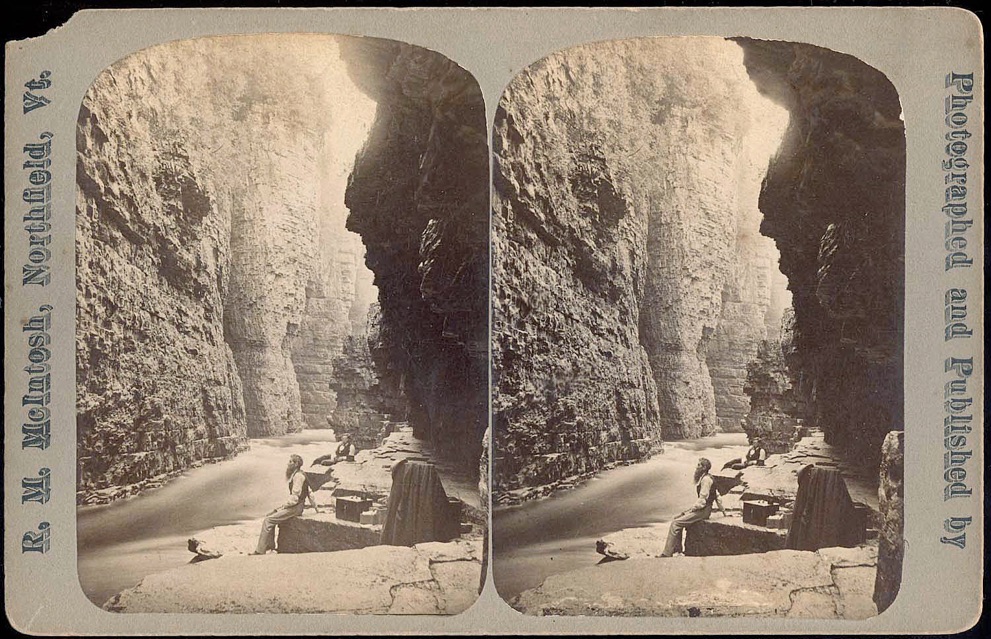Many from the 60s and 70s have yellow or orange mounts, like these examples from one of the biggest (or the biggest) producer at the time, E. & H. T. Anthony. I’m showing the backs, as well. The bottom card is a later kind of issue, but from the same set of earlier negatives. Anthony views are usually numbered in the image or on the back label, and are well researched and catalogued.
E. & H.T. Anthony, Triphammer Falls, c. 1868
The 1860s and 70s were the glorious heyday of the stereoview, with thousands of photographers of all stripes producing between a dozen and several thousand different views, each. Many are extremely fine, well made, well preserved. Others have shown signs of improper washing or mounting and have faded. The cards by Bennett in Wisconsin are among the very best ever made, technically.
Bennett, H.H.,
Eaton Grotto, c. 1870.
One sign of success (and ambition) was the introduction of taller cards. They had the same width (so they would fit in the viewers), but were “cabinet” or “imperial” sized, such as this nice Charles Bierstadt card. Many images on the larger cards (which required a larger camera) were also released on standard mounts. Note the two (left and right) don’t match tonally, one of many common minor flaws.
Bierstadt, Charles,
The Grisley Giant,1872
The West (as in the California view above) was a popular subject, especially along the railroad routes. Utah was just being developed.
Carter, C. W., American Fork Canyon, 1870s
Another (a little worn) from the same vicinity by a competing photographer showing a stereographer at work:
Russell, A. J., untitled, 1868
